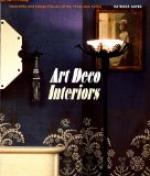To take one case in point, we glibly speak of “Colonial” furniture, that term which covers such a multitude of sins, and inspiring virtues, too! We have the Colonial which closely resembles the Empire, and we have what is sometimes styled the Chippendale Colonial, following the Chippendale of England. Our Colonial cabinet-makers used as models, beautiful pieces imported from England, Holland and France by the wealthier members of our communities. Also a Chinese and Japanese influence crept in, on account of the lacquer and carved teak wood, brought home by our seafaring ancestors. It is quite possible that the carved teak wood stimulated the clever maker of some of the most beautiful Victorian furniture made in America, which is gradually finding its way into the hands of collectors. Some of these cabinet-makers glued together and put under heavy pressure seven to nine layers of rosewood with the grain running at every angle, so as to produce strength. When the layers had been crushed into a solid block, they carved their open designs, using one continuous piece of wood for the ornamental rim of even large sofas. The best of the Victorian period is attractive, but how can we express our opinion of those American monstrosities of the sixties or seventies, beds in rosewood and walnut, the head-boards covering the side of a room, bureaus proportionately huge, following out the idea that a piece of furniture to be beautiful must be very large and very expensive! It is to be hoped that the lovely rosewood and walnut wasted at that time are to-day being rescued by wary cabinet-makers.
The art of furniture making, like every other art, came into being to serve a clearly defined purpose. This must not be forgotten. A chair and a sofa are to sit on; a mirror, to reflect. Remember this last fact when hanging one. It is important that your mirror reflect one of the most attractive parts of your room, and thus contribute its quota to your scheme of decoration. It is interesting to note that chairs were made with solid wooden seats when men wore armour, velvet cushions followed more fragile raiment, and tapestries while always mural decorations were first used in place of doors and partitions, in feudal castles, before there were interior doors and partitions. Any piece of furniture is artistically bad when it does not satisfactorily serve its purpose. The equally fundamental law that everything useful should at the same time be beautiful cannot be repeated too often.
Period rooms which slavishly repeat, in every piece of furniture and ornament, only one type, have but a museum interest. If your rooms are to serve as a home, give them a winning, human quality, keep before your mind’s eye, not royal palaces which have become museums, but homes, built and furnished by men and women whose traditions and associations gave them standards of beauty, so that they bought the choicest furniture both at home and abroad. In such a home, whether it be an intimate palace in Europe, a Colonial mansion in New England, or a Victorian interior of the best type, an extraneous period is often represented by some objet d’art as a delightful, because harmonious note of contrast.




